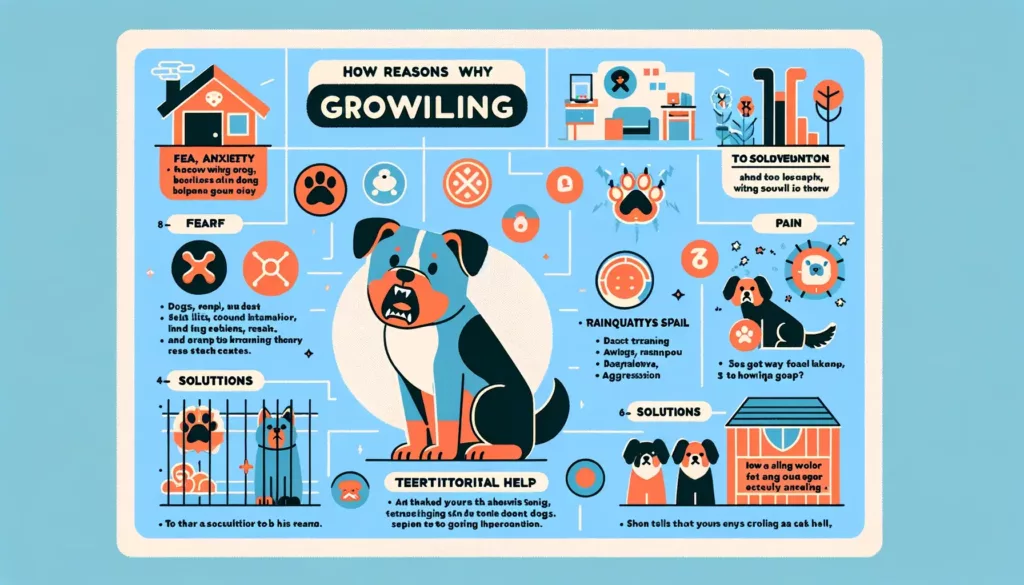Key Takeaways
- Growling can signify fear, anxiety, pain, territorial behavior, or aggression in dogs.
- Identifying the trigger and cause of growling allows you to address it properly.
- Training, socialization, and professional help may be needed for aggressive or anxious dogs.
- Setting boundaries and reinforcing good behavior prevents problematic growling.
If your dog suddenly starts growling when someone enters a room, it can be startling and concerning. But growling actually signifies an important signal from your dog that shouldn’t be ignored. This article will explore the reasons dogs growl, how to address it, and when to seek help from a professional trainer or veterinarian.
Why Do Dogs Growl at People?
Growling serves as a communication signal for dogs. Here are some of the emotions that may prompt growling:
- Fear or anxiety – New people or situations can make some dogs uneasy or frightened.
- Territorial behavior – Dogs may see part of the home as their space and growl when it’s invaded.
- Pain or discomfort – An injury or health issue could cause pain that leads to growling.
- Aggression – Dominant, possessive, or aggressive dogs may growl to warn off a perceived threat.
By determining the trigger for your dog’s growling, you can better address the underlying cause behind it.

How to Address Growling
Here are some tips for dealing with a dog’s growling:
- Identify what specifically triggers the growling and try to avoid those situations.
- Use desensitization training to gradually expose the dog to new people and help them overcome fear or anxiety.
- Reinforce commands like “quiet” when the dog starts to growl.
- Seek help from a certified dog trainer or behaviorist for aggressive or anxious growling.
- Check with your vet to rule out pain, injury, or illness as the cause.
- Never punish growling, as this may lead to bites without warning signs in the future.
Preventing Problematic Growling
You can curb problematic growling by:
- Socializing and training dogs thoroughly from a young age.
- Using positive reinforcement to encourage polite behavior toward guests.
- Setting clear rules and boundaries in your home.
- Providing enough exercise and mental stimulation.
- Addressing any stress, fear, or aggression issues early on.
Growling is normal dog communication. But excessive, inappropriate growling should be addressed with consistent training and professional help if needed to prevent more serious behavioral issues from developing.
Hi, I’m John and I love dogs. Ever since I was a kid, I always wanted to have a furry friend by my side. I grew up with a golden retriever named Max, who taught me a lot about loyalty, friendship, and fun. He was my best buddy for 12 years, and I miss him every day.